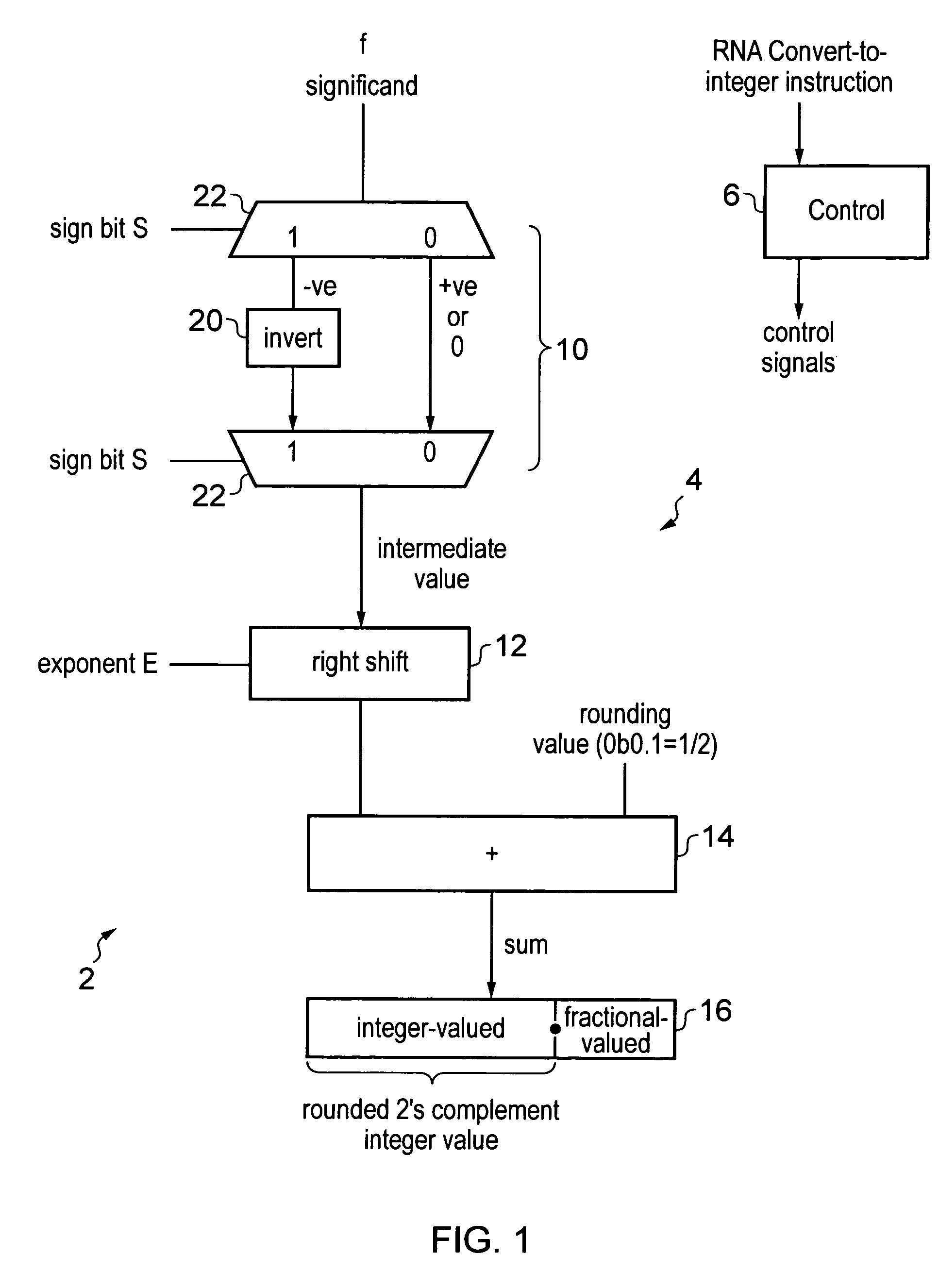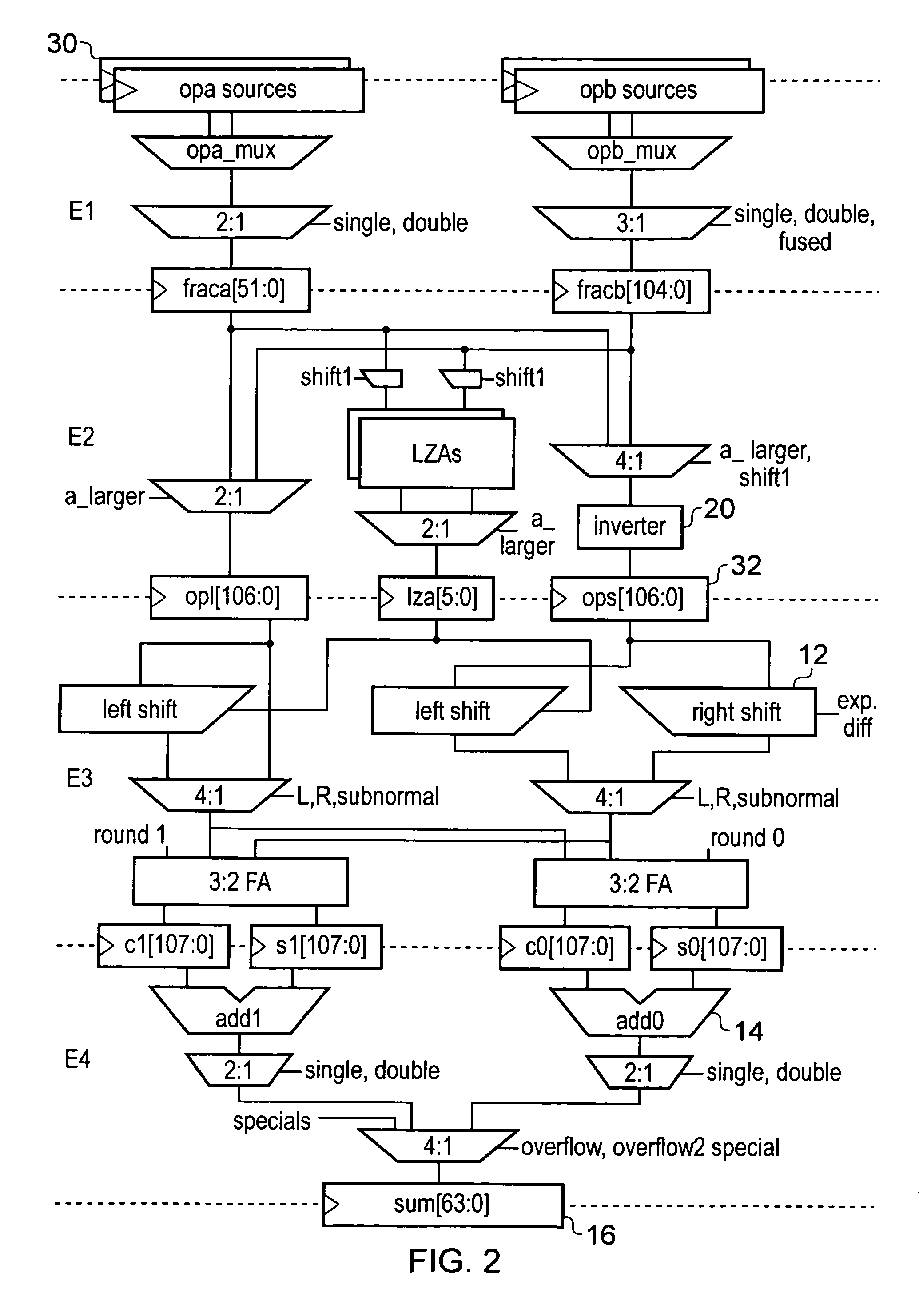Apparatus and method for performing a convert-to-integer operation
a technology of integer operations and apparatus, applied in the field of data processing, can solve the problems of reducing precision at the expense of extra range, and achieve the effect of performing more quickly and efficiently
- Summary
- Abstract
- Description
- Claims
- Application Information
AI Technical Summary
Benefits of technology
Problems solved by technology
Method used
Image
Examples
Embodiment Construction
[0045]FIG. 1 shows a portion of a data processing apparatus 2 for processing data. The processing apparatus 2 has processing circuitry 4 and control circuitry 6. The processing circuitry 4 comprises intermediate value generating circuitry 10, shifting circuitry 12, adding circuitry 14 and an output register 16.
[0046]The control circuitry 6 is responsive to a convert-to-integer instruction specifying RNA rounding (round to nearest, ties away from zero rounding) to control the processing circuitry 4 to perform a convert-to-integer operation. In the convert-to-integer operation, a floating-point value is converted to a rounded two's complement integer value. The rounding is carried out such that a fractional floating-point lying between two adjacent integer values is rounded to the nearest adjacent integer value, with a fractional floating-point value lying half way between two adjacent integer values being rounded to the one of the two adjacent integer values lying furthest away from ...
PUM
 Login to View More
Login to View More Abstract
Description
Claims
Application Information
 Login to View More
Login to View More - R&D
- Intellectual Property
- Life Sciences
- Materials
- Tech Scout
- Unparalleled Data Quality
- Higher Quality Content
- 60% Fewer Hallucinations
Browse by: Latest US Patents, China's latest patents, Technical Efficacy Thesaurus, Application Domain, Technology Topic, Popular Technical Reports.
© 2025 PatSnap. All rights reserved.Legal|Privacy policy|Modern Slavery Act Transparency Statement|Sitemap|About US| Contact US: help@patsnap.com



